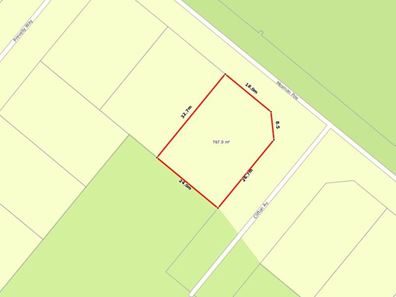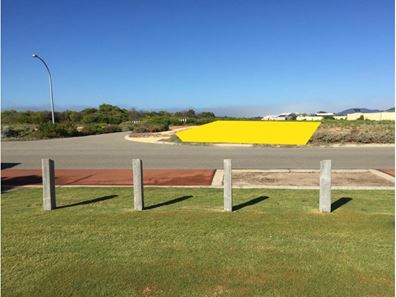Sold
Imagine family BBQ's at the park opposite you or Christmas walking down the beach for a family swim.
Whatever you fancy; you'll have a great time, making loads of memories on Mosman Parade.
This block is super special, why:-
• 767m2 vacant block
• Opposite the park, wouldn't you prefer to look out at green trees and grass then
your neighbour?
• Dual access being a corner block, extremely important for two reasons
• 1st, you have great access for boats or caravans
• 2nd, being a corner block you can position your outdoor area to be protected from
the southerly winds.
Both major factors that will enhance you're living, if or when, you decide to build on Mosman Parade. You don't need to build; with no time restrictions to build you can sit on it and wait.
But while it's the cheap, blocks opposite parks are extremely sought after so I would secure it ASAP!
Call Samantha today on 0409 104 724.
Listing snapshot by reiwa.com
This land listing located in Jurien Bay was sold by Samantha Murdock at Ray White Jurien Bay.
If you would like to get in touch with Samantha Murdock regarding Lot 863, 14 Mosman Parade, Jurien Bay, please call 0409 104 724 or contact the agent via email.
Nearby schools
Jurien Bay overview
The townsite of Jurien Bay is located on Jurien Bay, 266 kilometres north northwest of Perth. The bay, from which the townsite derives its name was named on July 1st 1801 by the French expedition under Captain Baudin. The name honours Charles Marie, vicomte Jurien, 1763-1836, a French naval administrator. Early maritime history of Jurien Bay includes visits by Captain Philip Parker King in the brig "Bathurst" in 1822, Lt. William Preston in the hired cutter "Colonist" in 1830 and J W Gregory in the schooner "Thetis" in 1847-8. The bay was first surveyed by James Harding, Harbour Master of Fremantle, in 1865, and a more extensive survey was made by Staff Commander W E Archdeacon R.N. in 1875.
The first evidence of interest in development at Jurien Bay was when a reserve for Shipping and Landing was declared here in 1887. A church site reserve for the Church of England was gazetted in 1930, and a church erected in late 1931. The church was demolished by the Army in early 1942 because it was of landmark value (of possible aid to a Japanese landing!).





